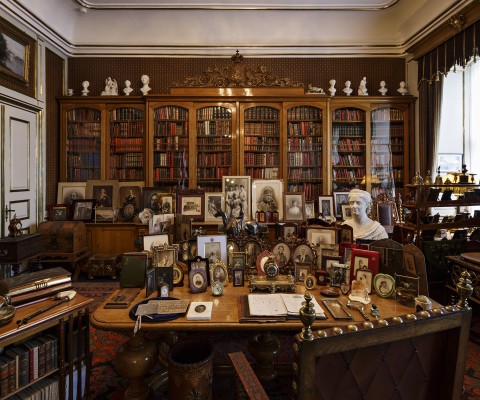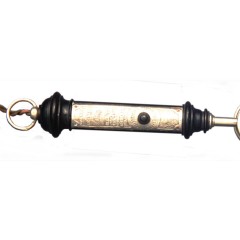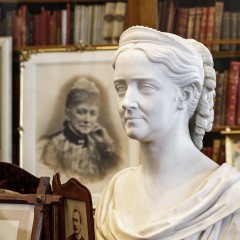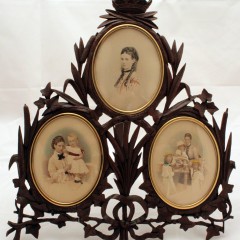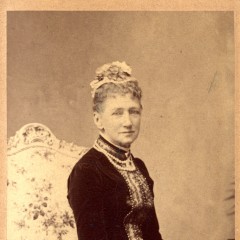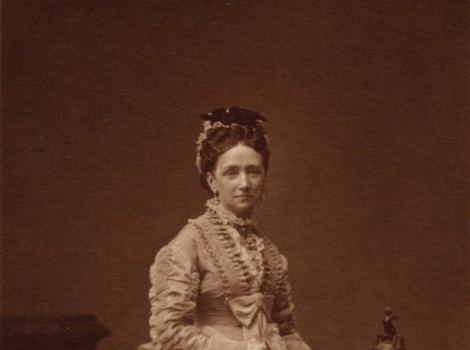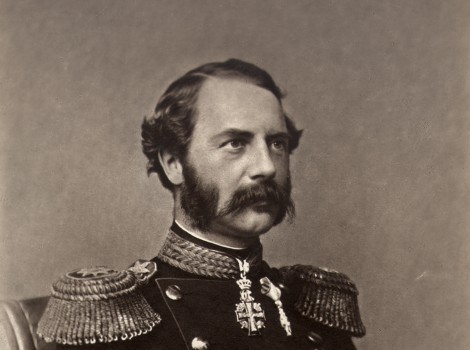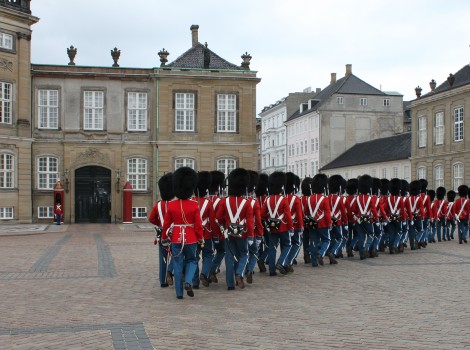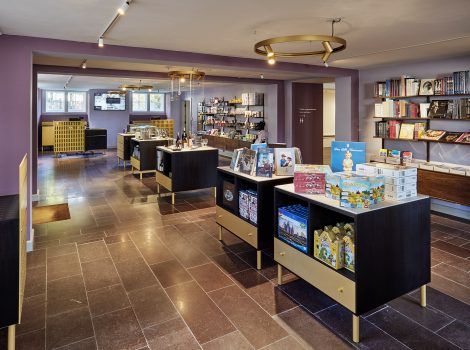Christian IX’s study
From the most recent Glücksburg king (Frederik IX) we jump back to the first (Christian IX), who reigned from 1863 to 1906 and was the progenitor of the House of Glücksburg. Originally the room was furnished in Christian IX’s Palace on the opposite side of the palace square, in which HM Queen Margrethe now reside.
The many trinkets, the draperies, the heavy curtains, and the many tassels show that the room stems from the Victorian era. Some of the furnishings were brought from Christian IX’s study in The Yellow Palace, where the family lived until the accession to the throne. Most of the furnishings stem, however, from Christian IX and Queen Louise’s reign.
The decor is influenced by the fact that Christian IX was a dedicated family man, as is demonstrated by the many family photos, which were a new phenomenon at the time. The photographs were in part status symbols, as they were still very expensive to produce, but they also show that the King identified himself with the role of “Europe’s father-in-law”.
 Dansk
Dansk
 English
English
 Deutsch
Deutsch



